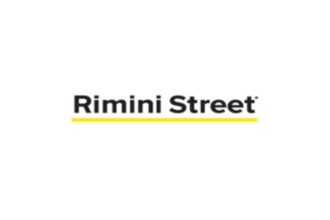Last week, UOB Singapore piloted their Gig employment program, and they have seven retirees who participated by taking up flexible works with the bank. This initiative started as the Bank did an internal poll and received 8 out of 10 employees willing to return to take up flexible work after retirement (Channelnewsasia, 2021).
This is a good initiative as the Gig employment program will benefit both organizations and individuals especially having potential full-time employment disappearing gradually.
To date, Malaysia’s unemployment rate remained unchanged with more than 700 thousand unemployed since July 2021. While Malaysia foresees the economy will rebound in 2022, many companies are still struggling and pressured to increase their revenue after being impacted by the pandemic since 2020. Some may have started to shift towards a new business model because of digital transformation, but there are still many companies that are challenged to decrease operating costs due to increased competition. Therefore, the workforce struggles as the organizations start to look at strategic changes including shifting towards the future of work.
Towards flexible workforce
As we are heading towards the evolution of digitalization, human and machines, organizations will need to change strategically. McKinsey & Company cited that the future HR will also be looking into driving a flexible workforce with an agile digital HR and platform to reduce employees cost.
Hence, how can an organization move towards these changes? At this point of writing, one of the prominent shifts is towards Gig employment as one of their strategic change. More platform providers and gig marketplace is making their presence locally as the rate of unemployment are taking slower to recover especially in Malaysia.
The evolution of digital transformation
Furthermore, with the evolution of digital transformation, many companies have sought hybrid and remote work models. Facebook at one stage employed a Remote Director to develop and structure their strategies and tools to promote and rework their employees towards the remote-work structure. Do you know that the remote-work is one of the criteria for having Gig engagement or employment?
With these emerging changes at the forefront, many companies are currently struggling to redefine their employment policy to cater to these Gig workers. The main challenges appear as many organizations lack of understanding the fundamentals and the mechanism of this Gig economy. Many people think that Gig Economy targeted low-level jobs and many interpreted these workers as e-hailing drivers, riders, packers, and many more. In reality, there are two types of Gig workers which are for “on-demand work” or “crowd work”. Therefore, the Gig economy also applies to all job levels; they may be an administrator to subject matter experts or even experienced professionals.
Perhaps the below are some considerations for the organizations to evaluate their readiness before they start employing gig workers.
- Who are these gig workers?
- How to differentiate the on-demand workers vs crowd workers
- Gig workers are not full-time or part-timers employees and they are not governed under the Employment Act
- Where to find these gig workers?
- How do you engage them?
- How to define the gig engagement policy, the guidelines, the do’s and the don’ts
- Who are these gig platform providers and gig marketplace?
- How are these gig workers being measured?
Having considered the above factors, Valuelab Consultancy Services has prepared a program to help companies to understand the above Fundamentals of this Gig Economy. In the program, the organizations able to learn
- the gig economy, how it began, and how it will thrive the future of work
- the differences between “on-demand work” vs “crowd work” so that the organization able to start the right framework and footing
- how to structure the mechanics of this engagement so that the organization is able to ensure risks are mitigated
- how to work on the work order as gig workers work based on the scope of work and not a job description
- how to identify the fine print and prepare for any anticipated backlash with the gig engagement
This program is HRD Corp registered and claimable under the SBL-Khas scheme. The classes will be conducted once a month and to register you may reach out to us here or visit here for more information.













